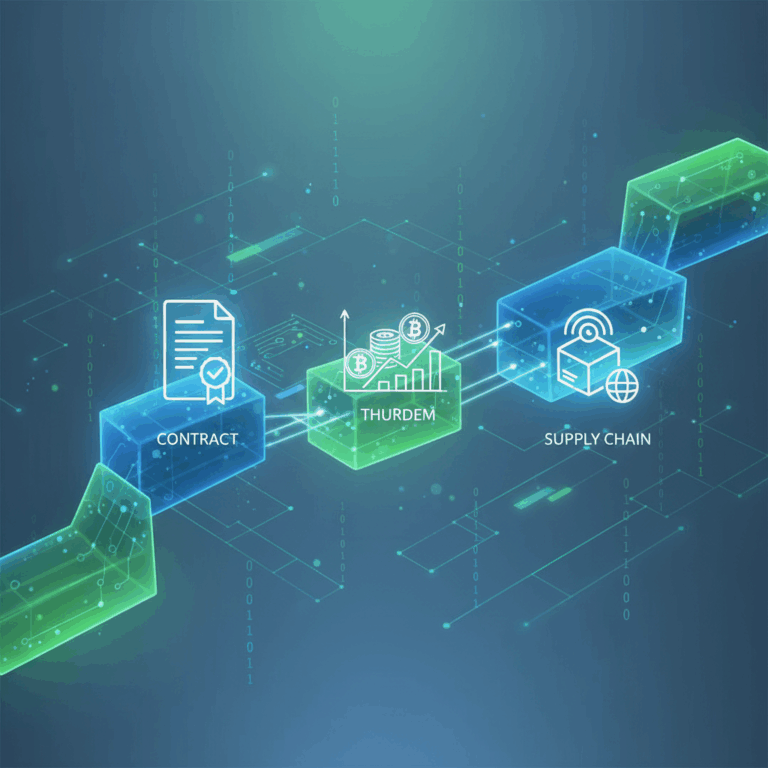Blockchain technology and its fundamental structure
The blockchain technology It is a revolutionary digital structure that allows data to be stored securely and transparently in a distributed computer network.
This system works by grouping transactions into blocks that are cryptographically linked, forming an immutable chain that guarantees integrity and trust among users.
Definition and basic operation of the blockchain
The blockchain is a decentralized ledger where each block contains a set of transactions and a unique code called a hash that links it to the previous one.
This cryptographic connection creates a chronological sequence resistant to modifications, since altering a block would require changing the entire chain, something extremely difficult.
The blocks are validated by consensus among the network nodes, ensuring that the information is verified and thus maintaining the trust and security of the system.
Security and transparency features in the distributed network
Blockchain guarantees security through decentralization, where each participant owns a copy of the complete ledger, preventing single points of failure or manipulation.
Transparency is achieved because all transactions are publicly recorded on the network, allowing for audits and open control by the users involved.
This architecture makes fraud and data alteration difficult, making blockchain a reliable and resilient digital ledger against attacks or manipulation.
Practical applications of blockchain in various sectors
The blockchain technology It has surpassed its initial use in cryptocurrencies and is now applied in multiple sectors, transforming processes and increasing security.
Its ability to offer immutable and decentralized records allows for innovation in areas such as finance, health, logistics, and digital identity management.
Cryptocurrencies and traditional finance
Blockchain is the technological foundation of cryptocurrencies like Bitcoin, recording and validating all transactions on a secure and transparent network.
In traditional finance, it facilitates faster and cheaper international payments, reducing intermediaries and enabling the tokenization of assets.
Furthermore, it promotes the creation of decentralized loans, opening up new forms of financing without depending on central institutions.
Logistics, health, and electronic voting
In logistics, blockchain allows for complete product traceability, guaranteeing the origin and conditions in which they are transported in the supply chain.
In healthcare, it securely and immutably records medical histories, improving interoperability between hospitals and patient confidentiality.
For electronic voting, technology creates transparent and fraud-resistant systems, increasing confidence in democratic processes.
Digital identity management
Blockchain offers secure methods for authentication and identity verification, eliminating reliance on vulnerable central authorities.
This gives users greater control over their personal data and reduces the risk of impersonation or online fraud.
In addition, it promotes solutions for governments and companies that require reliable digital identification systems for services and procedures.
Economic impact and digital transformation
The blockchain technology It drives economic transformation by enabling disintermediation, eliminating the need for intermediaries in multiple processes.
This feature significantly reduces the costs and time associated with traditional operations, facilitating more agile transactions.
Disintermediation, cost reduction, and automation with smart contracts
Disintermediation in blockchain eliminates agents that traditionally manage transactions, such as banks or notaries, thus reducing fees and delays.
This translates into a cost reduction for users and companies, optimizing resources and increasing efficiency in various industries.
On the other hand, the smart contracts They automate agreements through executable code on the network, guaranteeing compliance without human intervention.
These contracts reduce errors, strengthen trust, and allow for the rapid execution of terms, revolutionizing financial and commercial sectors.
Blockchain benefits and current challenges
Blockchain technology offers key benefits such as immutability, transparency, and security that are revolutionizing data management in multiple sectors.
However, it faces major challenges that must be overcome to reach their full potential and promote their massive and sustainable adoption.
Advantages: immutability, transparency, and security
The immutability It guarantees that once the information is registered, it cannot be modified or deleted, protecting the integrity of the data.
The transparency It allows all participants to access a shared record, which facilitates audits and strengthens trust in the network.
In addition, the security It is secured through cryptographic techniques and distributed consensus that prevent fraud and unauthorized access.
These benefits make blockchain a robust tool for transforming processes and reducing risks in various industries.
Challenges: energy consumption, scalability and regulation
One of the main challenges is the high energy consumption of certain consensus mechanisms such as proof of work, which generate environmental impact.
The scalability It also limits the ability to process large volumes of transactions quickly, affecting efficiency in massive networks.
Finally, the lack of clear regulation In many countries, this creates legal uncertainty and hinders the formal integration of blockchain into traditional economic systems.
Overcoming these challenges is vital for technology to reach its potential and achieve sustainable and responsible global adoption.






